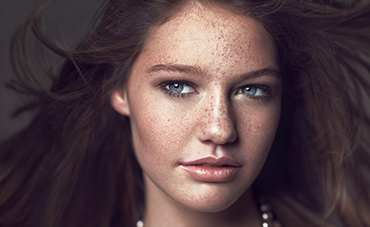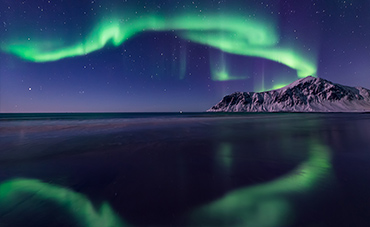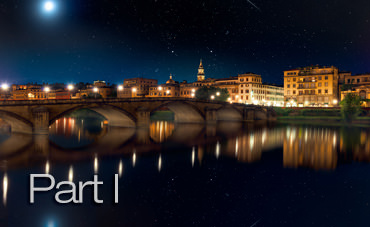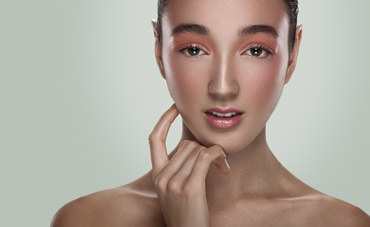As you develop your photography and post processing skills one of the most important things to do is to pre-visualize your final image and think about what can be done with post processing, long before you press the shutter. Having a plan for your images is crucial as your early actions will largely dictate the options you have once you get to the post processing stage. While this sounds easy in principle, in practice it’s a bit tricky. Not only does it require that you have a good knowledge of what is possible in post processing and what you need to make it happen, but you also have to take post processing from a “experiment and see” sort of mindset and go in with a concrete plan. What I usually try to do to in order to narrow my range of options \is to think about what tools are available to make my image more interesting or look different than other images I’ve seen of the same or similar subject. My options usually break down as follows:
Long exposure?
Do I want to shoot a long exposure here? Do I have water or a sky that will look great? If the sky is clear but I have water, should I still shoot long exposure and blend in a different sky later? If I’m going to blend a sky, do I have it already or will I have to shoot one?
Do I have moving trees, weeds, boats, etc? If so, should I take a normal shutter speed exposure so I can blend them out and freeze them later? Does the subject justify the time involved in doing so?
Multiple exposures?
Are there lots of people that I will want to blend out later? How many shots will I need to get rid of them all? Is the subject worth the time involved? Is there a stationary object blocking my view? Can I get rid of it by taking shots from an alternate POV and then using them to mask it out (there will be a future video tutorial on this)?
Is there a depth of field issue? Should I shoot multiple exposures at different focus points to blend later?
Is the dynamic range too wide for a single exposure? How will I blend them, HDR, luminance masks, painted masks? Will I be going for a more natural or surreal feeling? Should my composition match that feeling?
Do we have any contrast issues due to our light source(s) (e.g. shooting into a sunset)? Do we need to block off part of the frame to retain contrast and then blend the light source(s) in separately?
Do I want to take pieces of the scene from slightly different times of day? Perhaps I can shoot the sky right after sunset but shoot the subject a little later into blue hour when the lights have come on.
Are there other elements that we can blend in to make the scene more interesting? Perhaps a lone person walking or some birds will help bring the photo to life? It’s often easiest to shoot these while on site so that light quality and location match the rest of the image.
Panoramas?
Can I fit everything I want to into the frame with the lens that I have? Am I worried about wide angle distortion? Is the main subject near or far away (will I be able to stitch it easily)? Do I need this in a higher resolution than one frame is capable of? Do I simply want a different look than a wide angle lens is capable of producing?
Getting started
Now that we have a ton of options at our disposal, we have to do is eliminate options. If for example we don’t have a tripod, that pretty much eliminates long exposures and makes all other options much more difficult. Do we have time to get creative with this shot or do we just want to capture something? How interesting is the subject really? Do we foresee a killer shot or just something that’s OK? If you have a tripod then most of these don’t take too long to do in post but if you don’t then blending out fifty people with multiple handheld exposures is going to be nothing short of a nightmare. Once your circumstances narrow your range of options all that’s left is to take the necessary images. When in doubt always overshoot and as you refine your process, the number of excessive or redundant images will steadily drop.
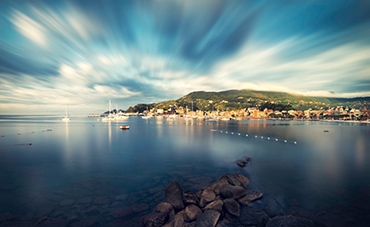 This image serves as a good example of shooting for post processing. Here I took three vertical long exposure panoramas and for each vertical slice I shot a -1 ev standard exposure image to bring more saturation into the horizon and to freeze the motion of the boats on the water and finally a +1 ev standard exposure to bring out shadow detail. Lastly, there was a pier with some tanning beds on the right of the frame which I suspected won’t look good in the end so I shot some more long exposure water and coastline at the same location that I could flip and use to cover the entire pier.
This image serves as a good example of shooting for post processing. Here I took three vertical long exposure panoramas and for each vertical slice I shot a -1 ev standard exposure image to bring more saturation into the horizon and to freeze the motion of the boats on the water and finally a +1 ev standard exposure to bring out shadow detail. Lastly, there was a pier with some tanning beds on the right of the frame which I suspected won’t look good in the end so I shot some more long exposure water and coastline at the same location that I could flip and use to cover the entire pier.
Remember that you can do a lot in Photoshop but you can’t create pixels out of nothing. Pre-visualizing your final image and studying the scene can save you hours in post processing and create an image that might otherwise not have been possible.


